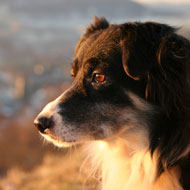
New World dog 'signature' may still exist, scientists say
A team of US scientists behind the largest, most diverse study of dog breeds to date, say their findings could help improve our understanding of dog diseases such as epilepsy, diabetes and cancer.
Researchers from the National Institutes of Health studied 1,346 dogs, spanning 161 breeds. Their work, published in Cell Reports, reveals for the first time that the 'New World' dog's signature may still be present within some modern breeds.
There is evidence to suggest that some dog breeds are descended from the ancient breed that travelled to the Americas with the ancestors of Native Americans. There have been dogs in the Americas for over 10,000 years, having travelled there from east Asia with the first humans.
Studies of mitochondrial DNA indicated that the New World dog had disappeared but researchers believe it is still present in the genome of some American breeds. This is the first evidence that the New World dog signature may not be entirely extinct in modern dog breeds.
The research also suggests dogs were first selected and bred for performing certain tasks, such as herding goats or cattle. Later, they were selected for their physical features and behavioural traits.
Additionally, researchers identified 23 clusters, or clades, of dog breeds that are similar. It is now possible to know where they came from and the diseases to which they are prone, the team say.
Gun dogs appear to have been developed in Victorian England, while other similar breeds, such as herding dogs, are diverse, which suggests they were bred many times in history, and in different places.



 The Greyhound Board of Great Britain has published new vaccination guidance, with all greyhounds registered from 1 January, 2027 required to have the L4 leptospirosis vaccination, rather than L2.
The Greyhound Board of Great Britain has published new vaccination guidance, with all greyhounds registered from 1 January, 2027 required to have the L4 leptospirosis vaccination, rather than L2.